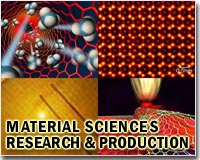 |
Evanston IL (SPX) Oct 06, 2010 Northwestern University researchers have taken another step towards realizing a new class of polymerase chain reaction (PCR) enzyme mimics, opening the door for the development of highly sensitive chemical detection systems that go beyond nucleic acid targets. The blueprint for building synthetic structures to detect and signal the presence of targets such as small molecule medical analytes (signalers of disease or bodily malfunction, such as neurotransmitters) and environmental hazards, such as TNT, to name just a few, is inspired by biology and its allosteric enzymes. The method also could be useful in catalysis and the production of polymers, including plastics. The work, which promises higher sensitivity than that of current detection tools, will be published in the journal Science. "PCR - the backbone of the biodiagnostics industry - is an enzyme that binds to a nucleic acid and changes shape, turning on a catalyst that makes copies of the nucleic acid for detection purposes," said Chad A. Mirkin, George B. Rathmann Professor of Chemistry in the Weinberg College of Arts and Sciences. "What if you could do that for thousands of small molecules of interest?" he said. "We'd like to be able to detect tiny amounts of targets important to medicine and the environment, opening avenues to new types of diagnostic tools, just as PCR did for the modern fields of medical diagnostics and forensics. Our new catalysts could make that possible." Mirkin led a team of chemists who built a synthetic structure that, much like the layers of an Oreo cookie, sandwiches the catalyst between two chemically inert layers. This triple-layer architecture allows the use of any catalyst as it will be kept inactive, or in an "off" state, until triggered by a specific small molecule. The enzyme mimic behaves like allosteric enzymes found in nature, catalysts that change shape to carry out their functions. (Hemoglobin is an example of an allosteric enzyme.) When the mimic reacts with a specific small molecule, the triple-layer structure changes shape and opens, exposing the catalyst. The resulting catalytic reaction signals the presence of the small molecule target, much like PCR amplifies a single piece of DNA. "One of our challenges as synthetic chemists has been learning to synthesize structures inspired by biology but that have nothing to do with biology other than the fact we'd like such complex functions realized in man-made systems," said Mirkin, also director of Northwestern's International Institute for Nanotechnology. In the work reported in Science, the researchers use an aluminum salen complex as the catalyst in the three-layer structure. The addition of chloride (the reduced form of chlorine) triggers the catalyst and starts the polymerization process. (Chloride ion binds at an allosteric binding site, distant from the active or catalytic site.) The addition of an agent that removes the chloride stops the process, but the chloride can be added back to start it again. The title of the paper is "Allosteric Supramolecular Triple-Layer Catalysts." In addition to Mirkin, other authors of the paper are Hyo Jae Yoon, Junpei Kuwabara and Jun-Hyun Kim, all from Northwestern.
Share This Article With Planet Earth
Related Links Northwestern University Space Technology News - Applications and Research
 Japan trading firms say China blocked rare earths exports
Japan trading firms say China blocked rare earths exportsTokyo (AFP) Sept 24, 2010 China blocked rare earth exports to Japan days before Tokyo's decision Friday to free a Chinese boat captain whose detention sparked the worst diplomatic row between the sides in years, traders said. Beijing denied reports it had prevented shipments of the rare minerals that many of Japan's top exporters, such as the world's biggest automaker Toyota, rely on to make cutting-edge products ra ... read more |
|
| The content herein, unless otherwise known to be public domain, are Copyright 1995-2010 - SpaceDaily. AFP and UPI Wire Stories are copyright Agence France-Presse and United Press International. ESA Portal Reports are copyright European Space Agency. All NASA sourced material is public domain. Additional copyrights may apply in whole or part to other bona fide parties. Advertising does not imply endorsement,agreement or approval of any opinions, statements or information provided by SpaceDaily on any Web page published or hosted by SpaceDaily. Privacy Statement |